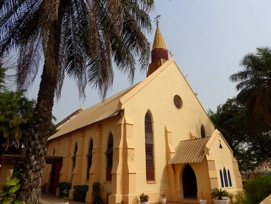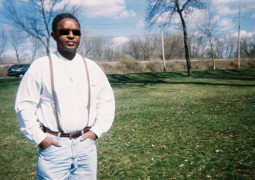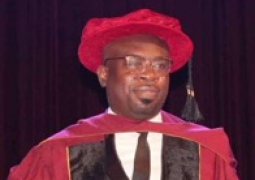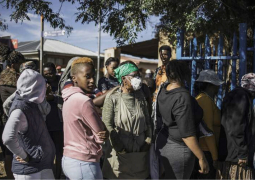
Amidst lush palm trees, supple greeneries, symphonic aqua skies, and a bustling route voyaging Banjulians and non-Banjulians alike, the ever-efficacious cathedral that has stood the test of time for over a century concocts an ethereal vision that commands an almost religious admiration from wandering eyes and worshipping hearts. The smart yellow bouncing off of its sturdy walls and castle-like design sings a near-mystical aura that reaches out with arms of nostalgia and warms the inner peace out of souls coagulated with the debris of everyday mishaps. As praises are glazed over such a historical artifact, so shall it be that we also wonder of its lore less talked about.
While Christianity originally made its way to The Gambia with the Portuguese sailors in 1456, Anglicanism initially saw life as a result of King Henry VIII in 1534 when he split with the Roman Catholic Church to gain access to annulments. With the British colonial rule Gambia becomes faced with, the tradition was eventually bound to be immersed in the nation’s people.
Anglicanism in the Gambia experienced a meek start but the arrival of the West Indian Church in 1855 ushered in John Henry A. Duport (a black ordinand from St. Kitts) and Hamble James Leacock (a white priest from Barbados) who were able to make some sort of impact. Leacock passed away within a few months of arrival but Duport fought through to establish the first Anglican Mission in the Gambia and remained active to watch it thrive until his death in 1873. Eventually, on January 6th, 1900, the foundation stone for St. Mary’s Church (the oldest standing Anglican haven in the Gambia) was laid by Gov. Robert Lewellyn and the structure saw its consecration by Bishop Taylor-Smith on 21st December 1901 with the name of the church coined from the patron saint of the Island and Mary, mother of Jesus. The cathedral received its first sermon from Bishop Taylor-Smith on Christmas Eve and has seen over 50 priests before the diocese (a district under the pastoral care of a bishop) of the Gambia was formed.
In 1935 a diocese comprising The Gambia, Senegal, Cape Verde, Portuguese Guinea, and French Guinea was formed with the initial name ‘The Diocese of Gambia and Guinea’ but later renamed the ‘Diocese of Gambia and The Rio Pognas (composed from the two rivers that somehow connect the nations) in 1940. St. Mary’s Cathedral, then acquired its first Bishop, appointed and consecrated by Rev. Rt. Hon. Cosmo Lang (then archbishop of Canterbury), John Sidney Daly who braced the Gambia on ascension day at the tender age of 32. Daly profoundly prioritized the youth and went on to contrive ‘Kristi Kunda’ (a training facility that comprised a church, a farm, a school, and a clinic) in 1940. Later on in 1951 however, he was reassigned to the Diocese of Accra, and ‘Kristi Kunda’ wilted in 1955 as a result of lack of funds. He was succeeded by Bishop Roderick Norman Coote who continued nurturing the existing works Daly pioneered and was known heavily among the people for his fluency in Fula and Wolof. Coote’s command that the cathedral bell be tolled at epiclesis remains something that is treasured and practiced to this day. He was relocated to Finland in 1957 subsequent to which his shoes were filled in by Bishop St. John Surridge Pike in 1958. Pike was greatly admired and referred to as the ‘people’s bishop’ as he was colossally invested in the lives of the people he led. His reign was quite short as he returned to the United Kingdom in 1963 where he was appointed Bishop within the Diocese of Guildford (he marked the last white Bishop the cathedral ever witnessed).
The 1960s came with a shift in attitude towards the British and an almost overwhelming need to embrace an African Identity, thus 1965 saw the election of Bishop Timothy Omatoyo Olufosoye. During `his succinct 5 years of reign, Bishop Timothy built himself quite a stunning reputation as he consecrated new churches, hospitals, and chapels he raised funds to construct. He left the shores of Gambia in 1970 and was succeeded by Bishop Jean Rigal Elisee, who is a native of Haiti, in 1972. Bishop Elisee’s fluency in English and French allowed for a productive rule as in 1985 Guinea was carved out of ‘The Rio Pognas’ to stand as its own dioceses with Rev. William Thomas Macauley (who was dean of the cathedral at the time) elected as its first Bishop. Bishop Elisee resigned in 1986 and although an election for a new Bishop was held in 1987, it proved inconclusive. From this time to 1989, authority fell to the archbishop of the ecclesiastical province of West Africa until February of 1990 when Rev. Fr. Solomon Tilewa Ethelbert Willie Johnson (ordained by Bishop Elisee) was enthroned as the first Gambian Bishop the cathedral and the Anglican Diocese of Gambia has ever seen. Bishop Tilewa ordained more clergy during his time than all the other Bishops combined. His thesis ‘A Bishop’s Manual’ was used by the Diocese of Gambia to formulate the Gambia diocesan development plan 2000 to 2009 In a participatory manner.
In 2012, Bishop Tilewa became elected as the 9th primate and Archbishop of the Internal Province of West Africa but sadly passed away on 21st January 2014. At this time of upheaval and mourning, Rev. Daniel Yinka Sarfo delegated Rev. Albert David G. Gomez to act as supervising Bishop of the Diocese of the Gambia, and under his rule, the ‘Kristi kunda’ nursery and lower basic school in Kantora district were revived and reopened with 190 students. On Friday 20th November 2015 at the Christ Church in Serrekunda, Bishop James Allen Yaw Odico (ordained by Bishop Tilewa) was chosen to serve as the 7th Bishop which he did for 7 years and retired at the age of 70 in April 10th 20202. He was then flourished by Rev. Fr. St. Obed Arist Kojo Baiden elected on January 27th, 2023, and consecrated respectively on June 17th and 18th 2023 as the 8th and current serving Bishop of the cathedral and the Anglican Diocese of the Gambia.
The cathedral through diverse capable hands has grown firm and productive and became a sanctuary to Anglicans. It has a capacity of 450 people and the structure itself relays sacred stories of unwavering faith. Its circular stained glass window known as the Christmas window, the window on the left-hand side of the cathedral known as the resurrection window, the one on the right-hand side known as the Pentecost window, and the main window seen right as you walk in known as the ascension window all depict elaborate stories of Christ and Christianity as a faith. Additionally, there are 14 stations of the cross around the cathedral to depict Christ’s suffering and a crucifix inside to depict his death and sacrifice. There remains on the outside of the cathedral a cross that stands as a monument to commemorate the people who died at the battle of ‘Sankandi’ (a crisis that took place in the former state of Kiang between the Sonike led by Musa Mansa Koto and the Marabout Sankandi led by Mansa Bana Darboe)
As part of the six parishes of the diocese of the Gambia (St Paul’s Church, St. Andrews Church, Church of the African Martyrs, St Cuthbert’s and Christ Church) St Mary’s Cathedral has mothered progress for the Christian community at large and continues to be one of the most aesthetically and visually pleasing structures in the Gambia. A place of worship that has survived colonial Gambia and stands to be a haven for worshippers in modern-day Gambia where independence is at its peak and people still need faith to fall to for guidance. A place of soothing scents and open arms to all who breathe.





